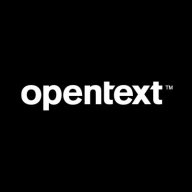

OpenText Core Application Security and OWASP Zap operate in the application security segment. OpenText shows strength in centralized management and expert-reviewed results, while OWASP Zap's open-source nature offers cost-effectiveness and comprehensive vulnerability coverage.
Features: OpenText Core Application Security provides HIPAA compliance, detailed priority guidance via real-time client portals, and supports a wide variety of programming languages with integration into CI/CD pipelines. OWASP Zap's features include automated scanning and API support, focusing on vulnerabilities like injections and authorization, and excel in fuzzer and intercepting proxy tools for comprehensive security assessments.
Room for Improvement: OpenText could benefit from better report visuals, streamlined vulnerability marks, and broader language support. Enhancements in scan speed and incident management integration would also be advantageous. OWASP Zap would improve with enriched documentation, expanded support for newer vulnerabilities, and better integration options with intelligence feeds and cloud platforms.
Ease of Deployment and Customer Service: OpenText supports flexible deployment options including on-premises, cloud, and hybrid environments, receiving generally positive feedback on customer and technical support services. OWASP Zap primarily depends on community support with limited direct technical support and primarily offers on-premises deployment.
Pricing and ROI: While OpenText is often viewed as expensive, its value lies in enhancement of security posture and reduction of security incidents. OWASP Zap stands out for being cost-effective as a free, open-source tool, notably advantageous for budget-conscious circumstances, with both solutions enhancing ROI through effective security breach prevention.
| Product | Market Share (%) |
|---|---|
| OWASP Zap | 4.3% |
| OpenText Core Application Security | 3.4% |
| Other | 92.3% |


| Company Size | Count |
|---|---|
| Small Business | 16 |
| Midsize Enterprise | 8 |
| Large Enterprise | 43 |
| Company Size | Count |
|---|---|
| Small Business | 10 |
| Midsize Enterprise | 11 |
| Large Enterprise | 21 |
OpenText Core Application Security offers robust features like static and dynamic scanning, real-time vulnerability tracking, and seamless integration with development platforms, designed to enhance code security and reduce operational costs.
OpenText Core Application Security is a cloud-based, on-demand service providing accurate and deep scanning capabilities with detailed reporting. Its integrations with development platforms ensure an enhanced security layer in the development lifecycle, benefiting users by lowering operational costs and facilitating efficient remediation. The platform addresses needs for intuitive interfaces, API support, and comprehensive vulnerability assessments, helping improve code security and accelerate time-to-market. Despite its strengths, challenges exist around false positives, report clarity, and language support, alongside confusing pricing and package options. Enhancements are sought in areas like CI/CD pipeline configuration, report visualization, scan times, and integration with third-party tools such as GitLab, container scanning, and software composition analysis.
What features define OpenText Core Application Security?Industries like mobile applications, e-commerce, and banking leverage OpenText Core Application Security for its ability to identify vulnerabilities such as SQL injections. Integrating seamlessly with DevSecOps and security auditing processes, this tool supports developers in writing safer code, ensuring secure application deployment and enhancing software assurance.
OWASP Zap is a free and open-source web application security scanner.
The solution helps developers identify vulnerabilities in their web applications by actively scanning for common security issues.
With its user-friendly interface and powerful features, Zap is a popular choice among developers for ensuring the security of their web applications.
We monitor all Static Application Security Testing (SAST) reviews to prevent fraudulent reviews and keep review quality high. We do not post reviews by company employees or direct competitors. We validate each review for authenticity via cross-reference with LinkedIn, and personal follow-up with the reviewer when necessary.